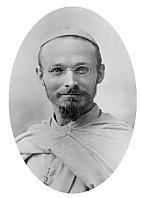
Ankole was a traditional Bantu kingdom in Uganda and lasted from the 15th century until 1967. The kingdom was located in south-western Uganda, east of Lake Edward.

Janani Jakaliya Luwum was archbishop of the Church of Uganda from 1974 to 1977 and one of the most influential leaders of the modern church in Africa. He was arrested in February 1977 and died shortly after. Although the official account describes a car crash, it is generally accepted that he was murdered on the orders of then-President Idi Amin.

The Church of Uganda (C/U) is a member province of the Anglican Communion. Currently, there are 37 dioceses that make up the Church of Uganda, each headed by a bishop.
The Anglican dioceses of Buganda are the Anglican presence in the Central Region, Uganda ; they are part of the Church of Uganda. The remaining dioceses of the Church are in the areas of Eastern Uganda, of Northern Uganda, of Ankole and Kigezi, and of Rwenzori.

Mbarara High School (MHS), also known as Chaapa is a boys-only boarding middle and high school located in Ruharo Mbarara City in Mbarara District in Western Uganda.

Festo Kivengere (1919–1988) was a Ugandan Anglican leader sometimes referred to as "the Billy Graham of Africa". He played a huge role in a Christian revival in southwestern Uganda, but had to flee in 1973 to neighboring Kenya in fear for his life after speaking out against Idi Amin's tyrannical behavior.

Gayaza High School is the oldest all-girls boarding secondary school covering grades 8 to 13 in Uganda. The school is Church-founded, government-aided and accredited by the Ministry of Education, Science, Technology and Sports.

Sheema, also Sheema Municipality, is an urban centre in the Western Region of Uganda. It is the largest municipality in Sheema District.

Rubirizi District is a district in Western Uganda. Like most Ugandan districts, the district is named after its 'chief town', Rubirizi, where the district headquarters are located.

itooma District is a district in Western Uganda. It is named after its main municipal, administrative and commercial center, Mitooma.
The Anglican ecclesiastical province of Uganda, Rwanda and Burundi was formed in 1961 following the division of the diocese of Uganda the previous year. Prior to 1980, the province included Uganda, Rwanda, Burundi and Boga, in what was then the country of Zaire. In 1960, the Diocese of Uganda was separated and in 1961 the smaller dioceses made a separate Province, under the Archbishop of Uganda, Rwanda and Burundi: As of June 2012, the Church of Uganda is divided into 34 dioceses and is under the Archbishop of Uganda and Bishop of Kampala.

Henri Streicher was a French Catholic missionary bishop who served as Vicar Apostolic of Northern Victoria Nyanza from 1897 to 1933. He ordained the continent's first Catholic priests of modern times, both from Uganda.

Bweranyangi Girls' Secondary School is a girls-only boarding middle and high school in Bushenyi District in the Western Region of Uganda.
Harry George Galt, sometimes called Harry St. George Galt, was a British subcommissioner of the Western Province of Uganda, a British protectorate. He was killed in Ibanda.
Professor Emmanuel Karooro is a Ugandan educator, academic and academic administrator, who serves as the vice-chancellor at Ibanda University, a private co-educational institution of higher learning in the Western Region of Uganda.
Brigadier Rebecca Mpagi, is a Ugandan military officer and Aircraft Maintenance Engineer, who serves as the Director of Personnel and Administration in the UPDF Air Force. She is credited as the first female in Uganda to qualify as a military aircraft maintenance engineer.
The Anglican dioceses of Eastern Uganda are the Anglican presence in (roughly) the Eastern Region, Uganda; they are part of the Church of Uganda. The remaining dioceses of the Church are in the areas of Buganda, of Northern Uganda, of Ankole and Kigezi, and of Rwenzori.
The Anglican dioceses of Northern Uganda are the Anglican presence in (roughly) the Northern Region, Uganda; they are part of the Church of Uganda. The remaining dioceses of the Church are in the areas of Buganda, of Eastern Uganda, of Ankole and Kigezi, and of Rwenzori.

The Anglican dioceses of Ankole and Kigezi are the Anglican presence in (roughly) the ancient Ankole kingdom and the old Kigezi District; they are part of the Church of Uganda. The remaining dioceses of the church are in the areas of Buganda, of Eastern Uganda, of Northern Uganda, and of Rwenzori.
Amos Magezi is an Anglican bishop in Uganda: he has been the Bishop of Northwest Ankole since 2017.















